Success of any business requires a collaborative effort of all the parties involved. Bringing together the talents of your entire team and coordinating their activities in a way that will enhance rather than impede the end result – this is what every leader is striving for. However, that may not always be the case as collaboration comes with its challenges. Especially when it comes to the use of technology – we often find limitations to the use of collaborative platforms, or we explore a different need that hasn’t been addressed yet by the software we use.
There are ways to overcome some of those challenges, and nBold is here to help you with that. In this article we will share with you what collaboration challenges you can solve with nBold.
Even if everyone is your team works from the office now, these days we do almost everything through our computers. All the data is kept either in the hard drive or in the cloud. And so, when you need to share information with your team, you do it digitally.
You may want to make sure there’s a specific process in place that everyone follows to collaborate both internally and externally. This way, everyone stays on the same page, there’s no need to share the same information several times, and the entire work is done from a single location. So, no steps or data will be missed or forgotten.
Challenge 1: Structuring and standardizing your collaboration workspaces
If you’re using Microsoft Teams for collaboration, you create teams where you set up meetings, have discussions, share documentation and updates on projects, deals, campaigns, and other activities. You create all the required channels for focused discussions, add the right team members, configure your most-used apps, add files, etc. But then you have to do it all over again for each new project.
This is where template solutions come in. You don’t need to spend lots of time on creating a new team from scratch. Moreover, you don’t need to remember the structure that your team must have or create team creation guidelines for end-users hoping they will follow them. Everything is done at the template level. Then, you can replicate the template as many times as needed.
Let’s face it, you should always consider the human factor – it’s easy to forget the details and miss an important step while building a team from zero. But with templates, you won’t need to think twice about. In fact, only once – when you create the template itself.
Moreover, team productivity will also go up. Your team members won’t have to spend time on routine tasks and will always know where they can share updates, what tasks they and their colleagues are assigned to do, and what should be the next steps. This will help everyone perform faster and more efficiently, driving better business results.
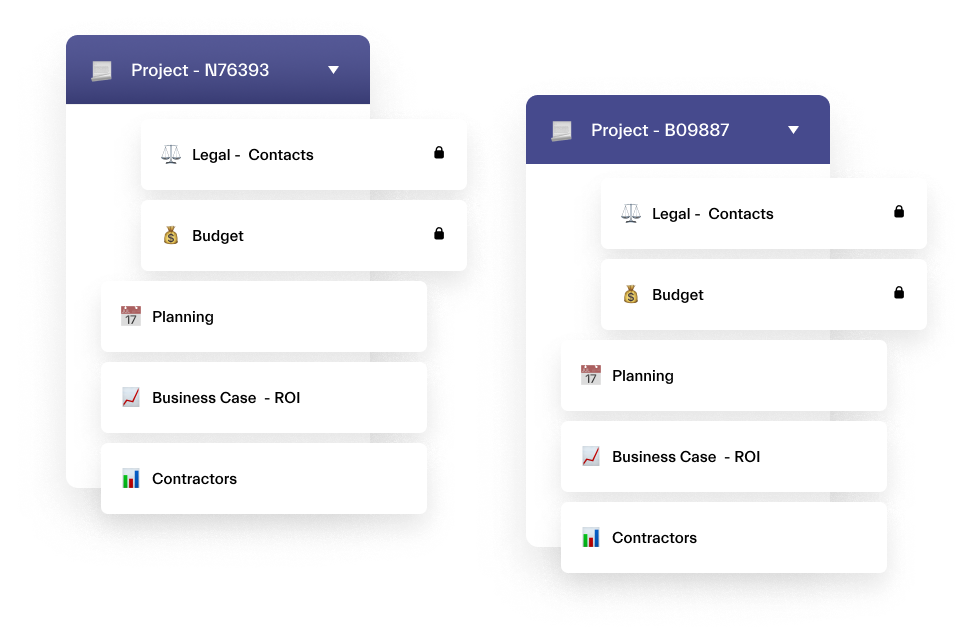
Challenge 2: Providing your teams with all required information
The administrative part of completing projects can be quite time-consuming. You need to go through various document storages and platforms, find and collect all the needed documentation, and then share it with the right team members.
However, you can automate this process with templates. You may choose to upload documents that your teams require for each new project just once to the template, and then they will be replicated into all new teams.
Thus, you may want to upload file templates, guidelines, executions playbooks, useful resources, proposal examples and other documents.
Additionally, you can add tabs to your channels for more visibility and easier access to the most important content. So, you may want to pin your SharePoint document library as a tab, or Planner where you will have sample tasks ready for your team to start working on.
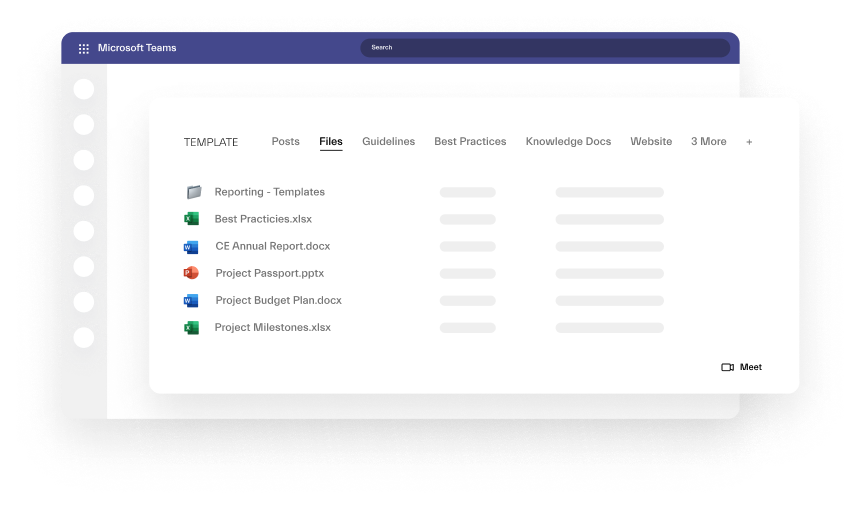
Discover how to create Collaboration Templates in Microsoft Teams and provide your teams with ready-to-go workspaces
Download our step-by-step guide on how to create Collaboration Templates for Microsoft Teams
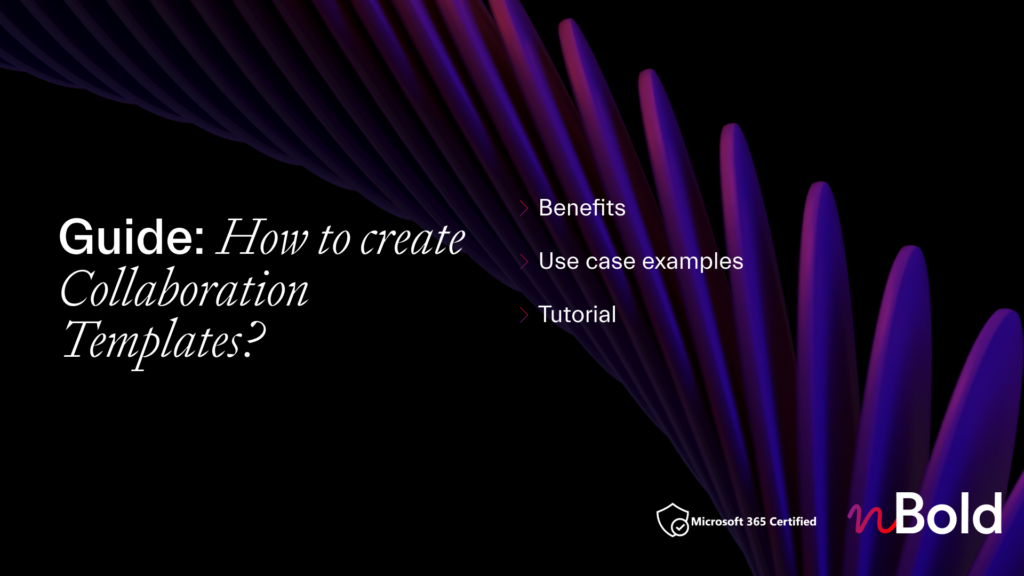
Challenge 3: Adherence to execution playbooks
Your organization may have entire execution playbooks and guidelines developed for teams to follow. Yet, getting them to adhere to these frameworks is a separate issue. Some steps are skipped or overlooked, certain tasks are not assigned to anyone, so nobody takes accountability for them, or the approval process is too messy so the project is put on hold.
There is a way, however, to create a digital collaboration workspace based entirely on your execution frameworks which will enforce adherence to them. This digital ‘translation’ of the playbook will look like a fully built team with private, standard, and shared channels for focused discussions. The channels can represent the topics covered in the project or the steps of its implementation.
Then, you can have guidelines added as tabs so that anyone can easily access them at any moment. You also have the possibility to create boards with tasks that correspond to each step in the execution playbook in any task management tool and integrate them into your teams.
nBold also allows you to enforce an approval process. For example, to move from one project phase to another, the project may submit specific documents for review. Only after they have been approved – which will be a trigger – they can move on to the next phase which will be translated into a new channel in that team, a new task in your task management tool, or other actions.
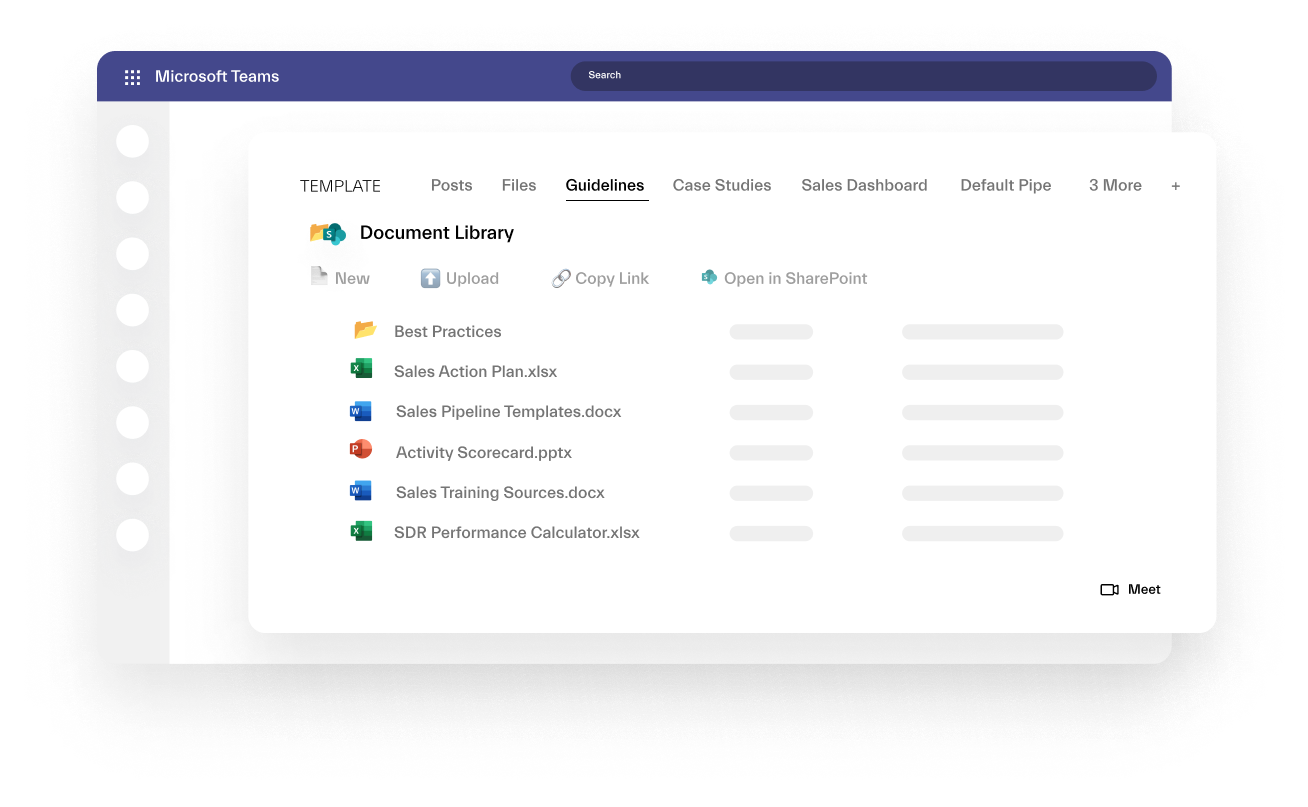
Challenge 4: Connecting your collaboration tools
Chances are, you use more than one solution in the company to organize your teams’ activities. On top of Microsoft Teams, it’s most likely also a CRM, a project management tool, or maybe even your internal platform. What happens in that case is that you have data stored all over the place.
The thing is, when collaborating, your teams need to share some important data with members of other teams. Say, your Sales need to give some updated about opportunities to the Marketing department. Or a client raised an issue that has to be handed over to the Customer Support. However, only your sales reps have CRM licenses. So, they will need to duplicate the data and share it in another platform. Not only does it take time, it also creates a mess in your records.
There is a way around it with nBold. The technology allows to connect all the tools you use with Microsoft Teams and synchronize them. Say, if any changed appear in the lead status in your CRM, you can decide to receive a notification in Teams to let the entire team know. Moreover, you will be able to make changes to your contacts’ records directly through Teams!
These are just a few examples of all the many possibilities of integrating 3rd party tools with Microsoft Teams. In other words, nBold allows you to bridge the information gap between users that use different platforms. You can also build any custom connection based on your organizational needs.
Not only will it save your budget as you don’t need to purchase additional licenses, it will also greatly increase your team efficiency and allow to make faster decisions.
You can learn more about Teams integration with CRMs in this blog post.
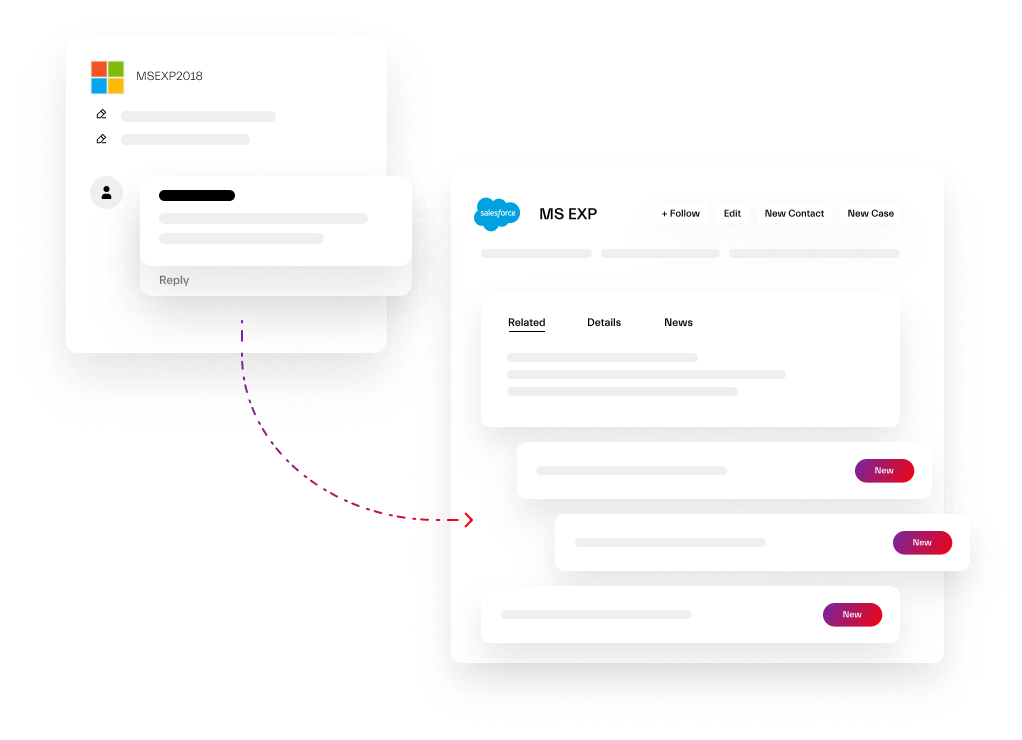
Challenge 5: Ensuring safety of your digital work environment
When collaborating, no matter if it’s with internal or external parties, data information security is always a challenge. You need to always make sure that information you share is safe and minimize the risks of data leaks.
Microsoft Teams is a secure platform that has many policies in place to protect your data. However, there might be instances when you are not always in control. Which is why some advanced governance policies might be required.
Here is a list of governance policies that nBold allows you to establish at the template level in Teams.
Establishing naming rules
Having a naming policy is especially crucial when you have hundreds or thousands of teams. It allows to navigate through them easier and facilitates managing teams for the IT department.
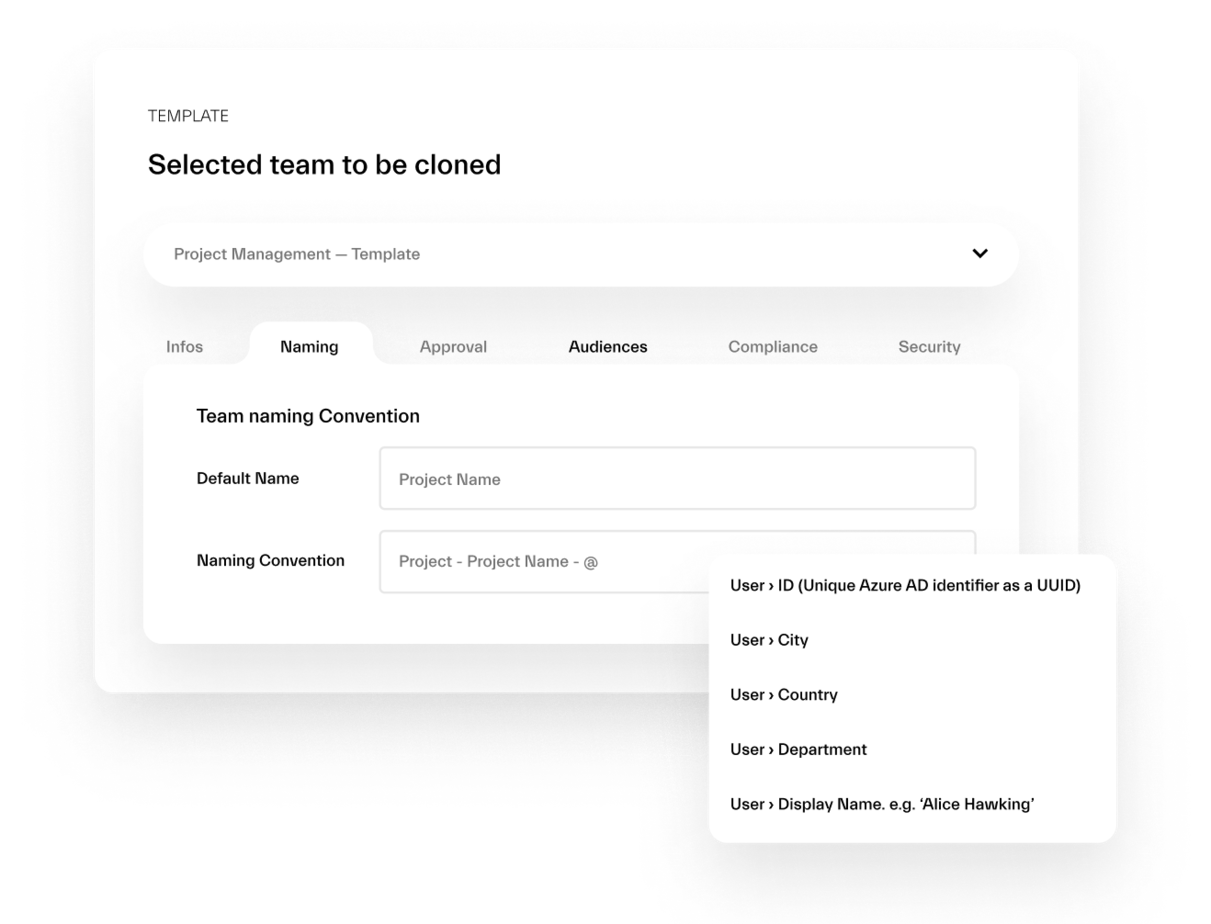
Controlling who can create new teams
You may want to restrict users from creating new teams for security reasons. At the same time, it’s an important capability without which you’ll kill adoption and impede collaboration.
To make everyone happy, you can establish Audience Targeting policy. It allows you to choose which groups of people in your organization will have access to a particular template from which they can create new teams.
Additionally, you can set up an Approval Workflow where you can select approvers who will receive team creation requests from end-users.
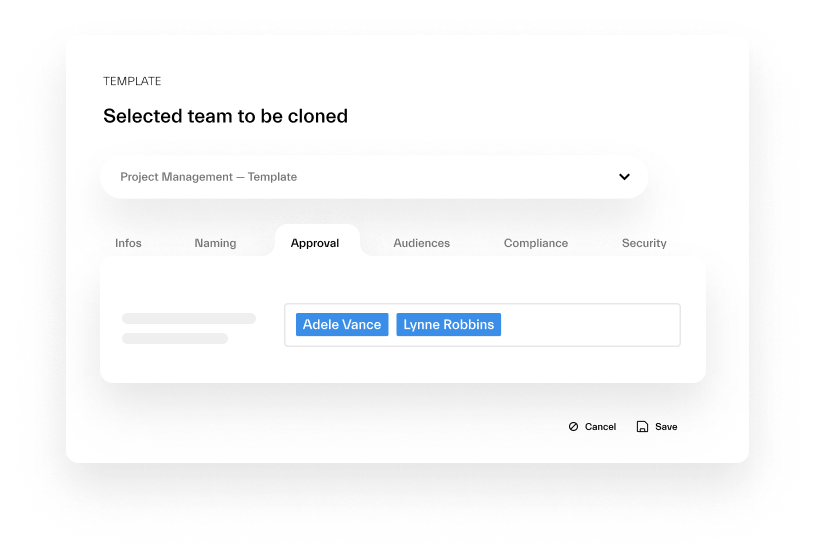
Adding the right people to new teams
For certain repetitive processes you may want to add permanent owners and members at the template level. In this way, they will always be added to newly created teams. Moreover, they will keep their permanent status even if a team owner decides to change it.
Additionally, you can define the mandatory number of owners and members to prevent your teams from becoming orphaned. This phenomenon has its own security threats, you can learn more about it here.

Enforcing privacy
You may choose at the template level whether the teams created from it will be private be default. To understand the differences between private and public teams, head over to this blog post.
Additionally, you can apply sensitivity labels to the teams that you create from the template. In this way, the data shared in that team will automatically get the sensitivity label defined at the template level.
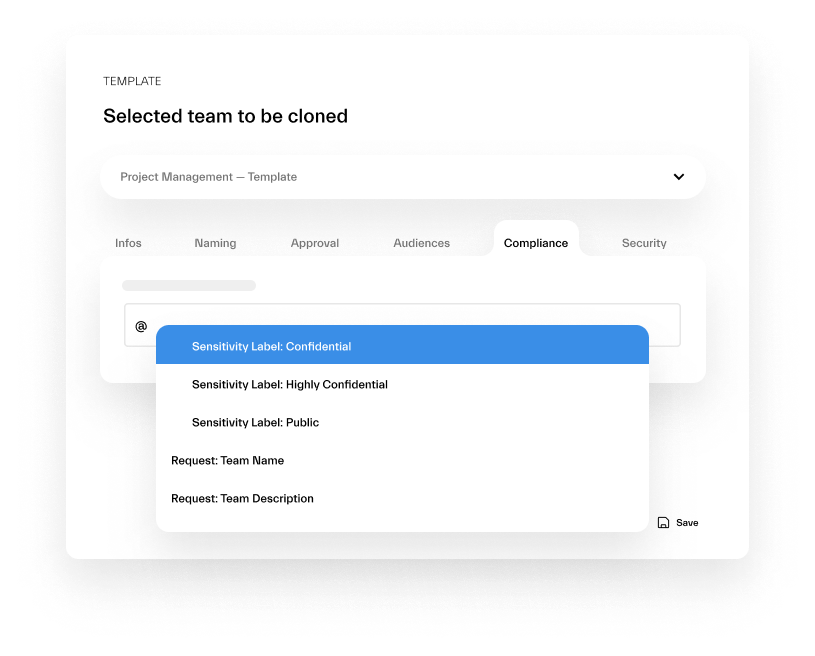
So there you go, 5 collaboration challenges that nBold can help you solve! Of course, the list is not exhaustive, and there are numerous other needs that you can address with nBold technology. Talk to our team and we will help you find a solution to your specific collaboration challenges.
